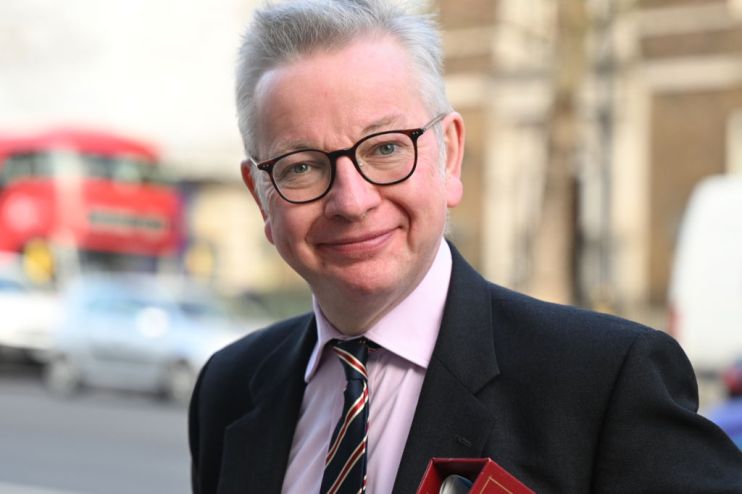As Gove returns to the toxic housing seesaw, inflation will become his worst enemy

After Monday’s reshuffle, and the new prime minister’s promise to fix the mistakes of his predecessor, can we expect some much needed stability in politics? Perhaps that’s wishful thinking, given the psychodrama that has rocked the Conservative party for the past year. But for those who are looking for some measure of consistency, there might be one bit of good news: Michael Gove is back as levelling up and housing secretary.
The housing sector was watching Rishi Sunak’s moves closely on Monday, after months of a revolving door of ministers. Michael Gove was sacked from the post in July at the height of the Johnsonian drama. He was replaced by Greg Clark, who was then replaced by Simon Clarke during the extremely short Liz Truss’ premiership. As the ill-fated government he was part of, Clarke didn’t even last two months. Now, we’re back to square one – with Gove at the helm.
The response to Gove’s comeback is positive from most corners of the industry – mainly because it means someone who knows the ropes is in post. Gove is known to be one of the most effective politicians in Westminster – one who gets things done. He made progress on the building safety crisis and called attention to the dire social housing conditions.
He got several large builders to commit to fixing all their buildings above 11m tall affected by cladding. He introduced a building safety levy to pay for the buildings without an identified builder or freeholder, standing firmly on the side of leaseholders. This doesn’t mean the building safety crisis has been solved: much more work is needed, and money is in short supply. But it was a series of important steps. On social housing, he campaigned for more funding and for “naming and shaming” the landlords who leave their tenants in inhumane conditions.
Yet there will be challenges aplenty. One thing coming back to haunt Gove will be his ambivalence towards the 300,000-homes-a-year target, one of the tenets of the 2019 Conservative manifesto. “Under Boris Johnson, Michael Gove was brought in to water down planning reforms and placate anti-growth and NIMBY voices”, says Rico Wojtulewicz, head of housing and planning policy at the National Federation of Builders. To make a dent in the Catch-22 of the housing crisis – the fact that we’re not building enough – Gove will need to work flexibly on planning and clarify how the government plans to build more, and fast. Juggling between the green belt protectors and the “build, build, build” squad won’t be an easy task.
He is also confronted with a tenuous economic climate that affects housing supply. “Planning permissions are down 16 per cent and starts on site are down 15 per cent, compounding a trend of decline from last year”, says Matthew Spry, senior director at Lichfields. Interest rates could cause new housing supply to drop to 110,000 in 2023/24, according to Capital Economics.
Housing poses complex long-term questions which won’t be solved in a fortnight. But Gove has a chance to leave a plan for the future, shaping legislation that could lighten the planning system and make it more up to speed. The Levelling up bill – still stuck in Parliament – could be the best opportunity to do that, according to Anthony Breach, senior analyst at Centre for Cities. How much progress is made, however, will depend on Rishi Sunak’s appetite for a renewed focus on the levelling up agenda.
Ultimately, Michael Gove’s comeback signals that the new government wants to “steady the ship”, according to Russell Pedley, co-founder of Assael Architecture. Housing is an issue people strongly care about; it affects how they vote. Gove will be well aware of what’s at stake.
For all the latest Lifestyle News Click Here
For the latest news and updates, follow us on Google News.

